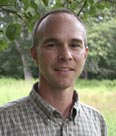Contact Information
CT Sea Grant
Juliana Barrett became a member of the NEMO team in 2006. She is an Assistant Educator in Residence with Connecticut Sea Grant and the NEMO program. As an ecologist, her focus is the coastal habitats of Connecticut. She works with the towns and groups working on the conservation, restoration and enhancement of coastal areas. Juliana is developing programs to assist coastal community leaders with technical matters related to the impact of land use on coastal habitats, riparian buffers, habitat management and restoration of coastal habitats. Juliana is the co-author of The Vegetation of Connecticut, a Connecticut Department of Environmental Protection publication. Previously, Juliana was the Geoffrey C. Hughes Tidelands Program Director with the Nature Conservancy in Connecticut, and also did private consulting. Juliana has a Ph.D. from the University of Connecticut Department of Ecology and Evolutionary Biology, a M.A. from the Department of Earth and Planetary Science at Johns Hopkins University, and a bachelor’s degree from Smith College in Biology. |
CT NEMO
Mike is a water resources educator, with primary responsibilities for running the CT NEMO Program. Mike’s position is jointly held between the Center for Land Use Education and Research (CLEAR) and the Connecticut Sea Grant College Program at the Avery Point campus. In addition to assuming the leadership of the NEMO Program, Mike will contribute to Sea Grant’s sustainable coastal community development program. |
Back to Top


 Juliana Barrett
Juliana Barrett Michael Dietz
Michael Dietz